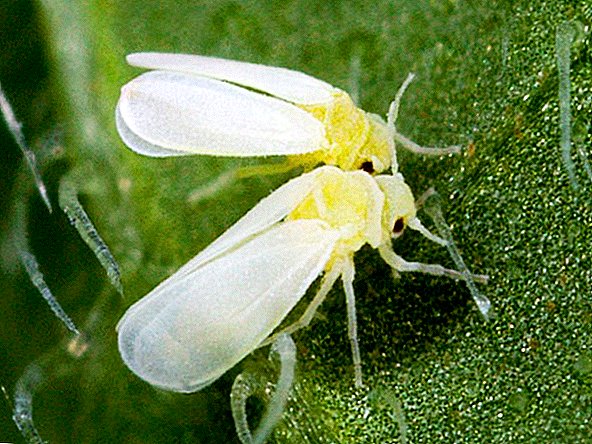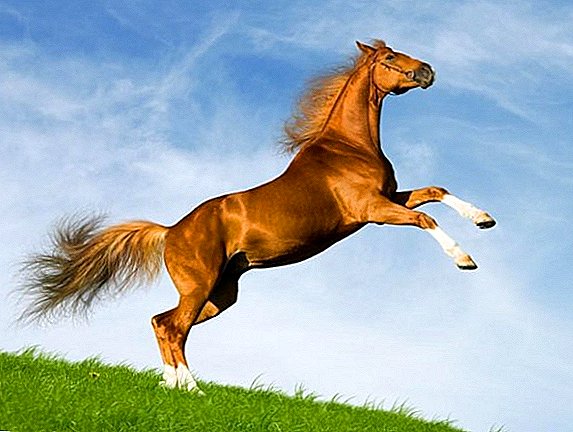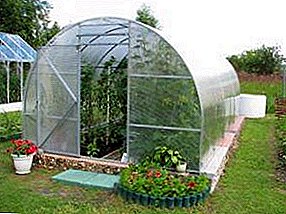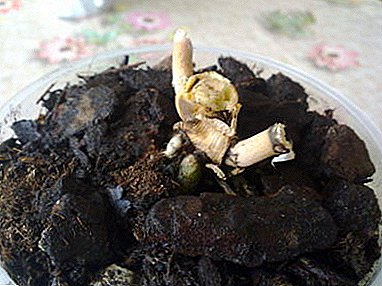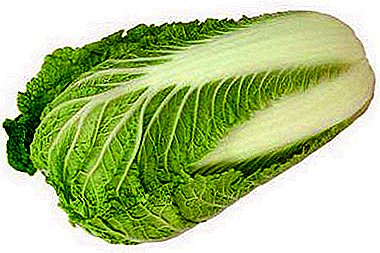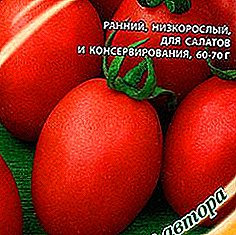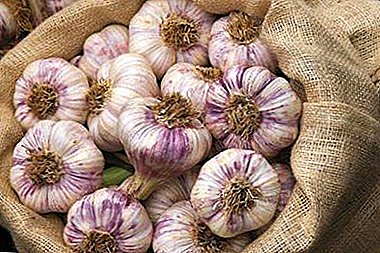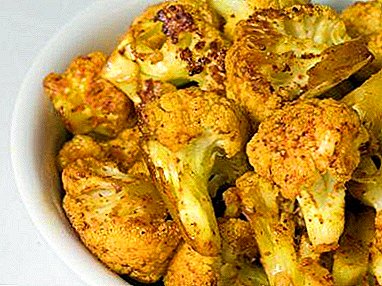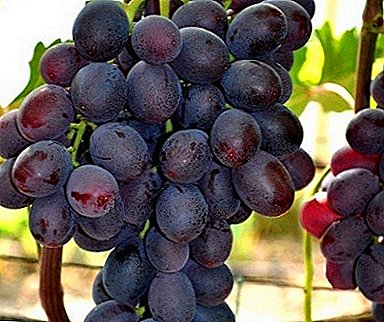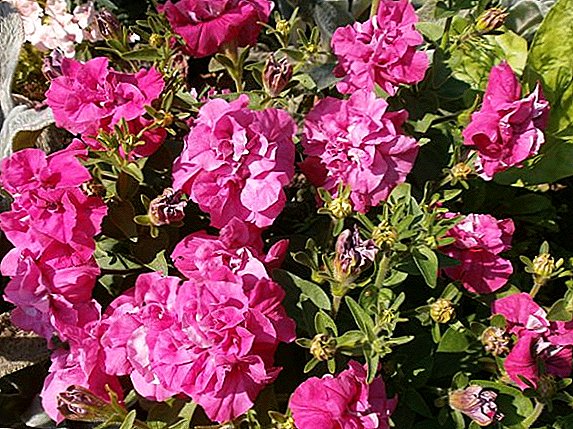 It is difficult to find such an unpretentious and at the same time so beautiful plant as petunia terry. Bright flowers will attract the attention of even the most indifferent passer-by.
It is difficult to find such an unpretentious and at the same time so beautiful plant as petunia terry. Bright flowers will attract the attention of even the most indifferent passer-by.
They will richly decorate any flower bed, and it is easy to care for them. Therefore, petunias are so loved by florist.
Description
Petunia is a perennial flower. In nature, it grows in tropical forests of South America. This simple plant has given rise to many varieties of petunias, which are now popular all over the world.
Petunia Terry - an annual hybrid, the result of hard work of breeders of the nineteenth century. In appearance of flowers it is difficult to find the similarity of petunia terry with an American relative. Small neat bushes up to 30 cm in height (there are 45 cm), covered with luxurious lush flowers with corrugated petals. The color palette is very diverse: from snow white to deep purple. It blooms all summer and autumn, to the very cold. 
Did you know? The name "petunia" comes from the Brazilian word "petun", which means "tobacco". Under this name in the 18th century, the genus Petunia was first described, since its leaves are similar to tobacco leaves..
The best terry varieties
The varieties of petunia terry can be divided into two groups: large-flowered with large flowers (10 cm or more in diameter) and many-flowered with small flowers up to 5 cm in diameter. The best of them are:
Angora - high (up to 45 cm) compact bush, covered with lush pale pink flowers (7 cm in diameter). Pleases with its beautiful flowering from June to the beginning of the cold weather. It is resistant to strong wind and high humidity. 
Valentine - powerful bush up to 40 cm with thick branches. With its large terry flowers of salmon color with corrugated petals it is very similar to carnation. It blooms early and blooms long. Sonata - low branchy shrub (up to 30 cm) luxuriously decorated with large snow-white lush terry flowers. Wildly blooms all summer until September and is not amenable to disease.
Sonata - low branchy shrub (up to 30 cm) luxuriously decorated with large snow-white lush terry flowers. Wildly blooms all summer until September and is not amenable to disease. 
Pirouette - This is a large-flowered variety of petunia. On powerful bushes up to 35 cm, large buds (10-15 cm in diameter) with jagged petals stand out brightly. The color is different: from dark pink to red with white edges, which looks extraordinarily beautiful, with the transition from one color to another. 
Double cascade - densely branched bushes 35-38 cm high with large flowers, up to 13 cm in diameter. Terry flowers have wavy petals and various colors: dark blue, burgundy, lavender, pale pink. Petunia "Double Cascade" bloom season comes a fortnight earlier than others. 
Duo - small-flowered petunia. Gustovetvistye bushes (35 cm in height) are covered with lush flowers (5 cm in diameter) bright colors: from white to red. Happen monophonic and two-color. Bloom all summer and are not afraid of moisture.
Did you know? Modern varieties of petunias tolerate bad weather (wind, rain, drought) better than old ones.
Growing petunias from seeds
Although petunia is unpretentious plant, growing seedlings is quite a painstaking process. It should begin in February-March, then the flowering will begin according to plan in May-June.
Substrate preparation
The soil should be prepared in advance, even in the fall, from a mixture of ordinary earth, humus and sand in equal amounts. You can buy a special substrate in the store. So that planted plants do not get fungal diseases, the earth must be safe. To achieve this in two ways:
- Calcify the substrate in a griddle or oven, fill the dishes with it for sowing seeds and pour over the potassium permanganate solution. In a day, when the soil dries, it will be ready.
- Pour the soil into the box for seed growth and pour boiling water on it. After the earth cools, you can sow the seeds.
 Both options allow you to completely get rid of harmful microorganisms, in particular, and fungi.
Both options allow you to completely get rid of harmful microorganisms, in particular, and fungi.Sowing
Petunia seeds are very small (in terry varieties seeds are drayar), therefore do not plant them deeply and cover them with a thick layer of earth. One by one, they are spread on the prepared place and slightly pressed into the soil, watered with a stimulant. Top seedlings should be covered with glass or film and put in a warm place. Suitable temperature is + 20 ... + 23 ° С.
Important! Germination of petunia seeds is quite high. But terry varieties produce very little seed material, from which only about 25% of seedlings corresponding to the variety will be obtained. Usually it will be the weakest and thinnest sprouts. For a greater guarantee, it is better to plant the seeds purchased in a specialty store.
Seedling care
After two weeks, the first shoots will appear. Then you should remove the glass or film coating and put the box with the seedlings on a well-lit window sill. The sprouts should be watered and sprayed regularly and moderately, but only so that the earth does not dry out and is not too wet, otherwise the plants will fall ill. If the room is too warm and not enough light, they are drawn out. You can remedy the situation by lowering the temperature and adding lighting, for example, with the help of fluorescent lamps. Seedlings also need feeding 3-4 times a month. It can be mineral and organic fertilizers, although chicken dung can also be used.
Picks
Appearance on sprouts of three true leaves is a signal that it is time to make a pick. If planting sprouts is not in separate pots, but in a box, then at a distance of about 5 cm. At the same time, you need to pinch each plant 1/3. After three weeks, the picking is needed again at a distance of 6-7 cm. Also, you should re-pinch each plant. Seedlings need to harden, bringing to the street or balcony, gradually increasing the time spent on the air. In May, when there are no frosts, the seedlings are planted in a permanent place: a flowerpot, flowerbed, container or pots. The distance between them should be at least 25-30 cm, so that there is enough space for the development of bushes. 
Important! Do not underestimate the pinching process. Due to this a strong compact bush of the correct form is formed..
How to propagate the plant cuttings
Since it is not enough chance to collect high-quality seeds independently and grow from them terry flowers, it is better to breed petunia by cutting. So the young bush is guaranteed to inherit all the characteristics of the mother plant and will really be a terry petunia.
Learn all the subtleties of breeding petunias cuttings and seeds.To do this, the bush, which will be the source material of the cuttings, needs to be brought into the room for wintering in the fall and create suitable conditions for it: light, coolness (+ 10 ... 12 ° C) and moderate, even sparse, watering. In the spring, young shoots up to 10 cm long, with at least two knots, are cut from this bush. With them you need to remove all the leaves, except for the top two. Rapid rooting will contribute to the phytohormone solution, in which you need to dip the cuttings of the cuttings. For rooting, cut shoots can be placed in transparent cups of water, wet sand or loose soil. Until the roots appear, the cuttings need a lot of light and heat (+ 20 ... + 23 ° С). Approximately seven days later, roots are formed, which means that the plant can be transplanted to a permanent "place of residence" in the turfy ground with sand.

How to care for a terry petunia
Caring for a petunia is easy, but it is important to do it right. If something is wrong, the plant reacts with weak flowering, does not bloom at all, or is often sick.
Lighting
Petunias love the sun, therefore, they must be planted on the sunny side or in partial shade. Perfectly fits a balcony facing south or southwest. If there is a lot of shade and little light, the stems are drawn out, more leaves and less flowers appear that become less beautiful.
It was young, carnation, aster, thyme, bell, yaskolka, stonecrop, edelweiss, sage (salvia), geykher and yarrow, as well as petunia, light-loving perennial plants, adapted to life in open, well-lit areas.
Watering
Terry petunias can tolerate extreme conditions: drought and waterlogging. But for the plant to develop normally and beautifully bloom, it needs regular watering. We can not allow the earthen room to dry. This can lead to spider mite damage. On the other hand, it is impossible for water to stagnate in the ground, because of this, the roots will rot and various diseases will develop.
Important! When it is hot, morning and evening spraying of bushes growing on the balcony with water is a good prevention of spider mite.

Fertilizer
Petunia will bloom profusely and continuously if it is fed with complex mineral fertilizers, which contain a lot of potassium. Feed should be done twice a month all the time while the plant blooms.
Removal of peduncles
Damaged and faded buds must be removed. If you allow the ovary to form and the fruit develops from it, this will prevent the bush from abundant flowering. If the ovaries are eliminated in time, new flowers will bloom throughout the entire flowering period.
Pests and diseases
The result of improper handling of petunias is the defeat of diseases and pests:
- "Blackleg" - Radical rot, in which the lower part of the stem becomes soft, darkens, and the plant dies. This disease manifests itself most often in seedlings due to non-compliance with the rules for sowing seeds and excessive watering of seedlings. To prevent mass death of seedlings, you must immediately remove the diseased plant along with a lump of earth. Other seedlings should be treated with fungicides. It is also necessary to establish the correct watering so that the water does not stagnate in the ground.
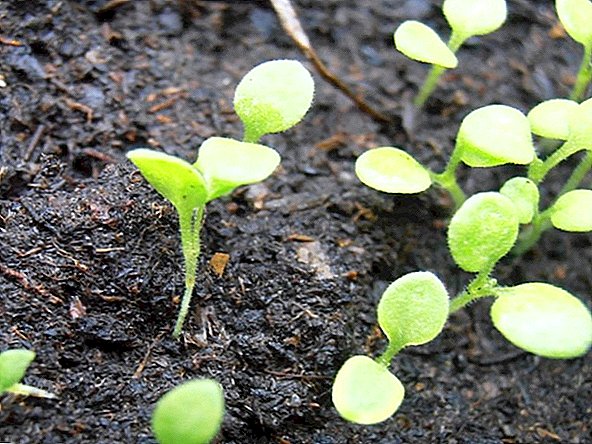
- Mealy dew - a fungal disease that covers leaves and flowers with white bloom. The cause is sudden changes in temperature and humidity. The affected areas should be immediately removed from the plant and treated with sulfur.

- True chlorosis - lack of iron in flowers, in which the leaves turn yellow. The plant does not receive it due to an excess of calcium in the ground and watering with hard water. Fertilizers will help with the presence of iron.
- Yellow leaves in petunia due to improper temperature, improper watering and pests.

- Spider mite - the red spider, which covers the lower part of the leaves with a white cobweb. To combat it, you need to wash the leaves with water, a weak tobacco extract, sulfur or special insecticides.
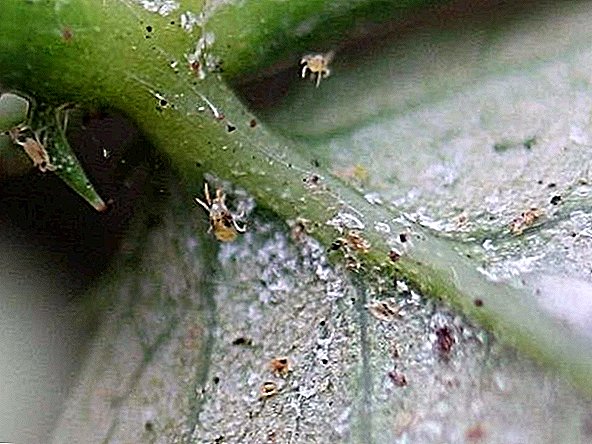
- Aphid - a small insect of green, gray or black color, which tozhezhivet on the underside of the leaf, takes the juice from the leaves, because of which they dry out and curl. You can get rid of aphids with the help of special ready-made products or a solution of nicotine sulfate (1 g) with soapy water (1 l). A day after the use of this tool, the whole bush should be thoroughly washed with clean water.

- Whitefly - a small white butterfly, which lays its larvae on the underside of the leaves and multiplies rapidly. Appears in greenhouses and other enclosed spaces. You can destroy it only with the help of preparations containing permethrin.
